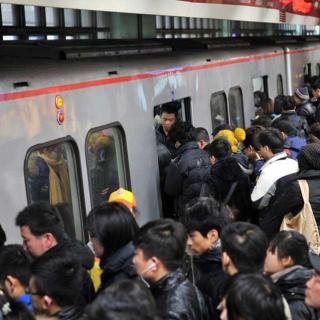
介绍:
Continuing on in its seemingly boundless growth, the population of Beijing’s metropolitan area is expected to outstrip previous limits. At a meeting of China’s top legislature, the National People’s Congress, the city’s vice mayor Li Shixiang announced the city government has increased the 2020 population target to 23 million.
A previous target set in 2005 fixed the 2020 target at 18 million. In 2014, the target was again stretched to a limit of 21.52 million Beijing inhabitants. The sweeping growth in the city’s population has led to a squeeze on municipal management of issues including transportation and pollution.
Nearly 40 percent of the population lacks a “hukou,” or a household registration, which makes them ineligible for access to municipal services including healthcare and education.
Beijing Mayor Wang Anshun said that the city will draw up a list of industries it can shed as part of efforts to alleviate overcrowding.
Still, some experts say the city has room to grow. Cai Jiming, a professor at Tsinghua University&`&s Center for Political Economy, said that given Beijing’s relatively low population density, it should be able to accommodate a population of 30 million people. Beijing’s population density is roughly half that of Shanghai and one-quarter of Hong Kong.
For Caixin Online, this is Diana Bates.
据悉,2005年国务院会议通过的《北京城市总体规划》提出,到2020年北京市总人口规模规划要控制在1800万人左右,但这一数字在2010年就被突破,足足提前了十年。目前,《北京城市总体规划》正在修编过程中。
根据《北京市2014年国民经济和社会发展统计公报》,2014年年末北京全市常住人口达2151.6万人,比上年末增加36.8万人。其中,常住外来人口818.7万人,占常住人口的比重为38.1%。
2014年也是北京控制人口力度最大的一年,各种控人手段层层加码。在以往“以业控人”、“以房控人”的基础上,还衍生出“教育控人”,升学就读须“五证俱全”的要求被严格落实,大量随迁子女无法就读。
北京市统计局人口和就业统计处处长沈青近日表示,常住人口继续保持了“十二五”以来人口增量、增速平稳下降的趋势。常住人口增量从2011年的56.7万人降至2014年的36.8万人,增速从2011年的2.9%降至2014年的1.7%,均达到“十二五”以来最低水平。人口增量下降、增速放缓既与经济社会发展有关,也与产业结构调整、非首都核心功能的疏解以及生活成本、交通成本提升有关。
尤其值得一提的是,外来人口增量增速也出现放缓。2014年末,北京常住外来人口为818.7万人,占常住人口的38%。人口增量从2011年的37.7万人降至2014年的16万人,增速从2011年的5.4%降至2014年的2%,下降3.4个百分点。
大家还在听

